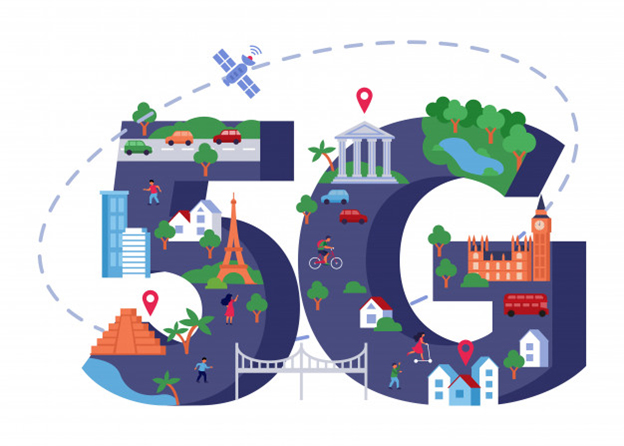Mandaluyong, Philippines [February 11, 2021] – Internet users in the Philippines have often raised concerns about slow internet speeds. Despite improvements in recent years, connectivity remains a big challenge, especially amid disruptions brought by the pandemic, such as the adoption of distance learning and work-from-home setups.
This year, the Philippines also ranks 107th out of 176 countries in terms of fixed broadband and 111th out of 136 countries in mobile internet, as revealed by a recent report released by industry tracker, Ookla.
But with the government’s push for better connectivity, the country’s top telecom players are now refocusing strategies to strengthen their infrastructures—this time to support fiber and the 5G network technology.
As the fifth-generation technology standard for the wireless network, 5G is expected to change how people live and work. This promise is rooted in the exponential increases in the speed and volume of data transmission that the network could enable—a capability that has long been clamored by internet users in the country.
Recognizing the need for better connectivity, especially amid the “new normal,” both the government and the country’s top telecom players are ramping up their network infrastructure upgrades, including the rolling out of plans to support 5G. The challenge, however, is compounded by the hundreds of additional cell sites and infrastructures required for 5G delivery, each demanding more power than previous generations.
With everything that must be considered when rolling out 5G services, Vertiv, a global provider of critical digital infrastructure and continuity solutions, says that it is easy to underestimate the role that the infrastructure will play in enabling 5G success.
“Telecom operators contend with the challenge of improving existing sites to prepare them for 5G architecture. For instance, the power and cooling systems that exist today will need to be expanded and, in some cases, upgraded, to ensure the long-term reliability, maintainability, and profitability of 5G network technology. Energy efficiency strategies also need to be revisited and existing sites reevaluated to ensure 5G preparedness,” said Jason Lim, country manager of Vertiv in the Philippines.
To ensure that they are prepared for 5G, Vertiv identified five areas that telecom operators need to evaluate, as listed below:
Mitigating high energy consumption. Telecom operators will need to get more aggressive in deploying energy-saving technologies. This is integral to mitigate the impact on operating costs from the higher energy consumption of 5G technology. The move to 5G is likely to increase total network energy consumption by 150-170 percent by 2026, with the largest increases in macro, node, and network data center areas.
Preparing existing sites for 5G deployment. While it is expected that the transition to the 5G infrastructure is not immediate, operators would need to reevaluate their existing 4G sites to ensure that they could handle the initial phases of 5G deployment. These can be addressed through retrofitting without having to establish or invest in new site deployments immediately.
Ensuring adequate power and cooling capacity. Consequently, telecom operators also need to adopt new solutions to support the demand expected from 5G technology. Among the areas to consider are minimizing AC-DC conversions, deploying powerful uninterruptible power supply (UPS) systems to handle the spike in power density, upgrading from VRLA to lithium-ion batteries, and investing in new cooling techniques to combat the expected increase in energy costs.
Expanding existing battery capacity. A recent study conducted by research firm 451 Research revealed that upgrades from valve-regulated lead-acid (VRLA) to lithium-ion batteries are expected to increase from 66 percent of those surveyed to 81 percent five years from now. Lithium-ion batteries will be an important tool as networks densify to accommodate the shorter distances 5G millimeter waves can travel.
Minimizing the cost of 5G investment. With the opportunities presented by 5G, operators need to keep in mind how to maximize their investments into 5G architecture. Basic infrastructure readiness, site access, and quality interconnection will be the main considerations to efficiently deploy 5G and even edge topologies.
As the top telecom enterprises and operators in the country start prepping up for the early stages in 5G adoption, Vertiv aims to help them in realizing their plans into reality through its range of infrastructure solutions. Deploying data and analytics to design highly reliable and efficient systems that are simple, sustainable, and future-ready, Vertiv collaborates closely with our customers to ensure infrastructure solutions meet the specific requirements of the application.
To learn more about how Vertiv supports the continuity of today’s vital e-learning and other business applications, visit Vertiv.com.
Liked this post? Follow SwirlingOverCoffee on Facebook, YouTube, and Instagram.


